One of the most endangered animals on Earth is a fluffy-tailed, black and white langur, with a mohawk-like crest and tufts of white hair sprouting from its cheeks. It spends its days with its family, expertly navigating mountainous karst terrains and munching on leaves.
But the lives of approximately 100 of the 250 existing voọc mông trắng – the white rump langur – are under threat, as their karst-forest habitat in Kim Bang is destroyed by quarrying.
Northern Vietnam is abundant in biodiversity, thanks in large part to limestone karsts. Limestone mountains come in varying shapes and sizes in the North, protruding from the land and water. Patterned with lush greenery, and with plentiful nooks, crannies and caves, the hulking masses create rich environments for a wide swath of living things, many of which can’t be found anywhere else in the world.
Big, beautiful and teeming with life – today, mountains of karst are being torn down, hauled away, crushed, and ultimately used as cement to fuel development at home and abroad.
“If we can proactively protect these karst regions, we can really conserve a large portion of biodiversity just by making sure that these karsts aren’t turned into cement,” said Aryeh Miller, a research fellow at the Smithsonian’s National Museum of Natural History and a participant in karst forest surveys in Vietnam.
In December, the discovery of a new iridescent snake, Achalinus zugorum, in the North brought attention to the extreme biodiversity in the karst-rich locale and all the species that have yet to be studied. However, due to habitat loss, scientists like Truong Nguyen, vice director of the Institute for Ecology and Biological Resources at the Vietnam Academy of Science and Technology (VAST), fear that species could go extinct before they can even be documented.
“Many species may disappear before naming,” he told the Globe. “Our discovery [of the snake] not only underlines the hidden biodiversity of karst forests in northern Vietnam, but also attracts the attention of management authorities and conservationists about the urgency of tropical rainforest protection.”
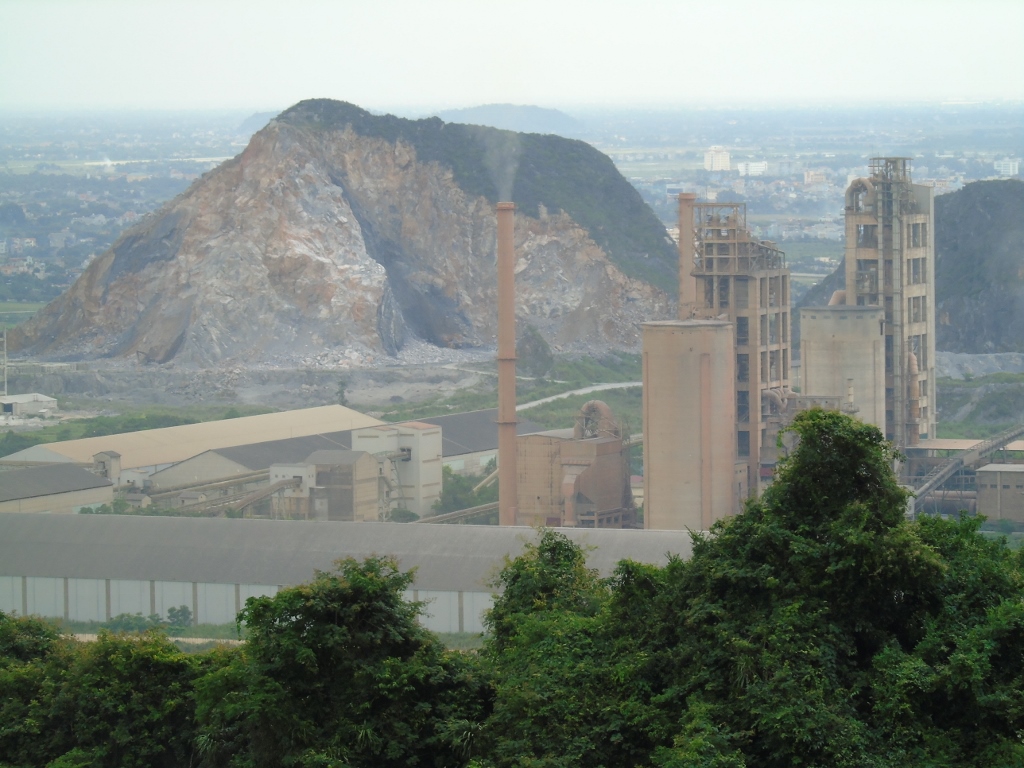
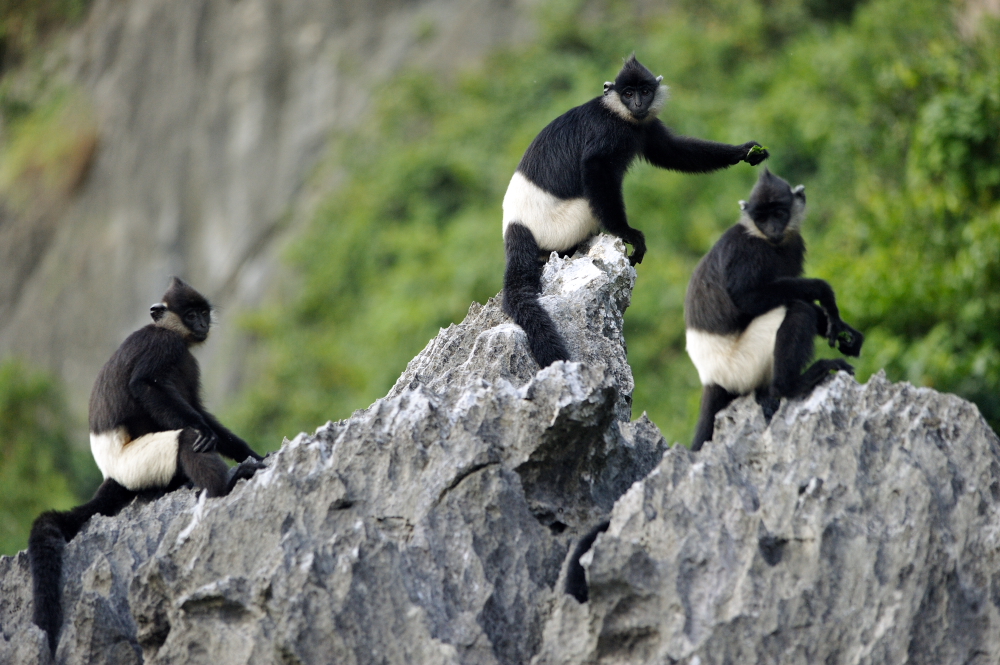
The Delacour’s langur – as it is referred to in English – also illustrates the threat that the mining of limestone karsts is putting on at-risk animals in the region. Efforts are being made to turn Kim Bang into a protected area, but it is uncertain what the fate of the langurs and the other endangered plants and animals living in the forest will be.
From a broader perspective, the mining of Kim Bang is just one example of how the destruction of karst forests for mining purposes is a major Southeast Asian conservation issue, with quarrying a primary threat to the survival of karst-associated species across the region.
Often, each karst acts as a distinct habitat. The dank caves, underground rivers, and towering mountain tops create environments with such specificity that the animals that evolve in the karst only exist because of it and can’t survive without it.
“A major factor for the high species diversity in northern Vietnam is the presence of limestone karsts which provide a variety of distinct microhabitats and are noted for their high levels of endemism,” Truong said.
The karsts which are so formative to northern Vietnam were shaped as the limestone rock in marine sediment was pushed above the surface through terrestrial uplifting. In contrast to most tropical soils, karst soils are highly fertile, Truong explained.
It’s almost hard to go to Vietnam and not discover a new species
In 2019, Truong was an influential member of the research survey responsible for the discovery of the shimmering snake, Achalinus zugorum. But as interesting as a newly-discovered, retreating, milky-eyed, earthworm-feasting snake with kaleidoscope colouring is, it’s what it symbolises that holds greatest importance – undiscovered creatures living in Vietnam’s karst forests that may be lost forever.
The Smithsonian Institution and Truong’s organisation, the Institute of Ecology and Biological Resources, signed an agreement in 2019 to collaborate on surveying karst-rich locales. The partners then got a research grant from the Global Genome Initiative, through which Vietnamese and American scientists surveyed lifeforms in karst forests later that year.
“It’s almost hard to go to Vietnam and not discover a new species,” Miller said, reflecting on the 2019 survey that resulted in the discovery of the odd-scaled snake.
Miller recalled that after a month of survey work in the North that involved leeches, scorching heat, carrying around bags of geckos in the moonlight and headlamp-lit treks through streams, the team came across the opalescent snake on the final evening of research.
“It was actually the last night of surveys,” he said. “We got out of the car to head to the field site, which is a waterfall area, and on the road we saw this little snake.”
The group of herpetologists, who study “creeping animals” such as frogs, snakes, and salamanders, quickly realised from the snake’s appearance that they had an animal of importance within their grasp.
“We definitely knew that we had something very neat and very novel,” he added.
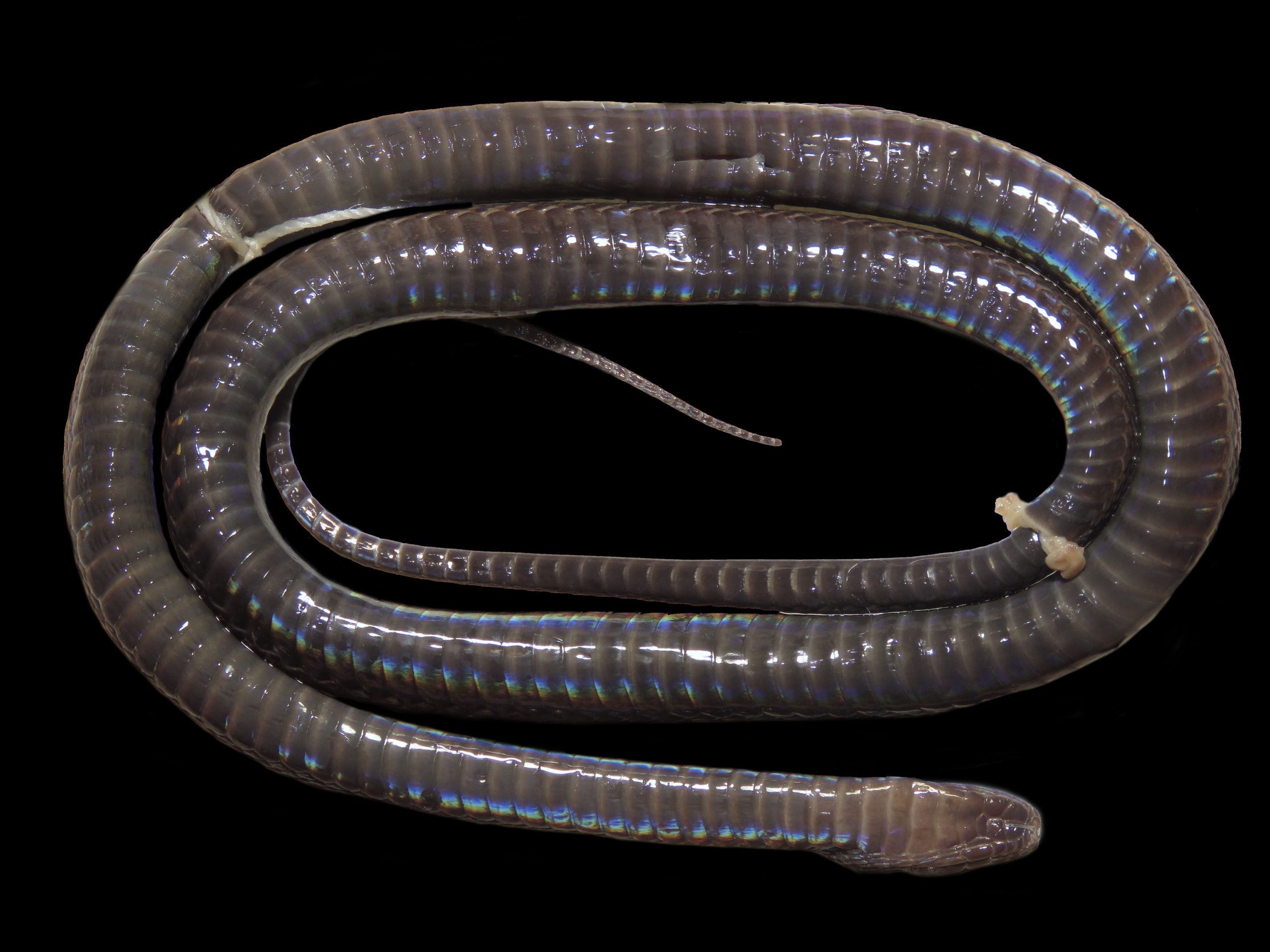
After sequencing the snake’s DNA, it became clear that it belonged to a previously undescribed lineage of the poorly known genus Achalinus. As this snake branched off the evolutionary tree before most snakes, its appearance and behaviour differs from other groups, making it a scientifically rich creature for study.
According to Miller, Achalinus zugorum is likely not the only new species discovery that will come out of the 200 specimens they collected during the survey. Moreover, the discovery of the snake fits into a steady trend of newly discovered species in Vietnam, particularly reptiles and amphibians, as Truong and the VAST team survey previously undocumented areas.
“In 1996, there were 340 species of reptiles and amphibians recognised to occur in Vietnam, compared to the astonishing increase to 566 by July of 2010,” Miller said. “It’s really this exponential rise in the number of species being described in Vietnam. That’s really been led by this proactive effort by Truong and his team within VAST.”
While there’s hope that this trend will continue, there is worry that the demolition of karsts will reduce the number of species left for discovery. According to the ASEAN State of the Environment Report, the quarrying of karst is one of the major factors intensifying the threats to biodiversity across the region, although it is not often given the attention it is due.
As top exporters of limestone, this pressure is particularly heavy on Vietnam and Malaysia.
“Generally, limestone being one of the most versatile of all industrial rocks and minerals, it is of major importance in human development and prone to degradation from quarrying for cement used in building and road construction,” Truong said.
Species have already gone extinct as a result of this mining. In Malaysia, Plectostoma sciaphilum, a snail described as “beautiful and dainty“, once lived on a single limestone hill. In the mid-2000s, the hill was quarried and with it, the delicate snail disappeared. A further 18 extinctions have been documented in Malaysia as a result of limestone quarrying.
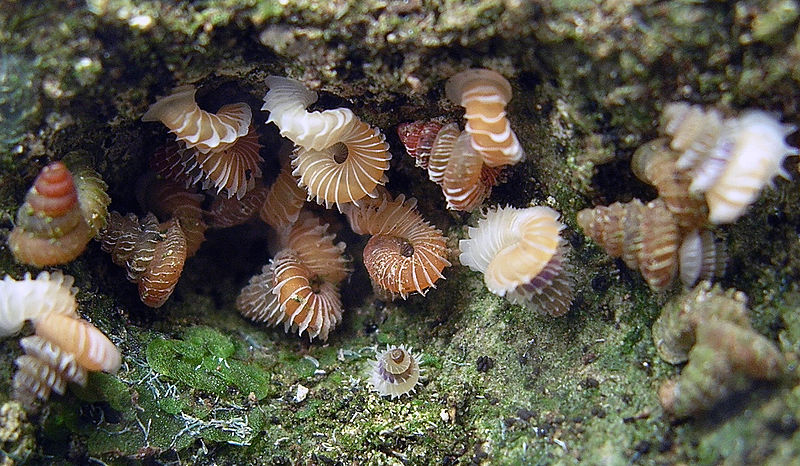
Vietnam’s karst forests have been reported to harbour 2,000 species of insects, the same amount of plant species, and 541 animals. But, considering karst regions in Vietnam have not been comprehensively researched, there’s likely many more living things that have yet to be described, on top of those that have already disappeared as a result of mining.
Nowhere is this more true than Kim Bang, an area of 10,125 acres of densely-packed karst formations just a 90 minute drive from Hanoi. Although it is unknown exactly how far the forest once extended, the range of limestone reached at least to the banks of the Red River approximately 30 kilometres away, said Josh Kempinski, country director of conservation group Fauna & Flora International-Vietnam (FFI).
“Kim Bang is full of rare and wonderful things,” he told the Globe.
Despite this karst shrinkage due to at least 15 years of mining ventures, what’s left of the forest has remained undeveloped, without government protection, due to the extreme nature of the topography which makes it dangerous to traverse, and nearly impossible to remove timber from.
“That’s why there’s still biodiversity left. We are talking here about really one of the very last most inhospitable difficult places to access,” Kempiniski stated. “Some of these super extreme limestone habitats they’re just naturally protected.”
voọc mông trắng, the tufted langur, was first scientifically documented by French ornithologist Jean Theodore Delcacour in 1930. In a dark forecast that speaks to the fate of his namesake langur, which is now one of the 25 most endangered primates on Earth, Delacour wrote in his autobiography that “humans would eventually annihilate all life on earth”.
In the past, Kempinski said, there were about nine or 10 small populations of Delacour’s langur left. “We have seen these populations kind of blink out of existence which is very worrying.”
A population of roughly 150 Delacour’s langurs live in the protected Van Long Nature Reserve in Ninh Binh Province. In 2016, FFI searched forests for more langurs, with their attention drawn to neighbouring Ha Nam Province – home to Kim Bang’s large, relatively untouched stretches of land. That year, FFI found 40 white-rumped langurs in Kim Bang. In a subsequent survey in 2018, the estimate was revised to 100.
But currently, 11 mining sites in the area are actively encroaching on the langurs’ karst home.
“They are mining the good forest, they are mining into the core forest and they are mining absolutely inside the Delacour’s habitat. They’re basically just being sandwiched, they don’t have anywhere physically to go,” Kempinski said.
The methods for extracting limestone from karst is occurring in two ways – with excavators clawing away at the rock at the bottom, and with dynamite explosions weakening the karsts from the top, he explained.
“They will one day be literally dynamited, they’ll be in a tree and they will be dynamited, or they will move at the last minute,” he said.
Relocating, however, would put a troop of these highly territorial primates between a rock and a hard place.
“If they move out of the way, they’ll be moving into the home range of another family group, and then they will fight, and the males will probably fight to the death,” said Kempinski. “The triumphant male will often kill the offspring of the previous family group.”
As the mining has intensified, members of the community patrol team have seen the numbers of these territorial battles increase. But whether the langurs are destroyed by dynamite or by each other, there is no doubt that the mining of Kim Bang will be a blow to the species, said Kempinski.
“Loss of habitat is directly related to population size – if you lose half of Kim Bang, you will lose half of the langurs in the long run,” he said.
We’re just relying on the sort of the star power of a langur, a primate – a relative of human beings, charismatic and with cute babies
The Delacour’s langur isn’t the only endangered species living in Kim Bang. Endemic to Vietnam and critically endangered, the yellow-flowering Hải đường hoa vàng plant was found in the forest in 2018. According to Le Sy Cong, FFI’s ‘tree man’, the organisation is partnering with the Global Tree Campaign (GTC) to deploy project activities to protect the blooming shrubs in Kim Bang.
Within the forest, there are also endangered pygmy slow loris, black giant squirrels, stump-tailed macaques, plants, and a collection of other karst-specialist cave-dwelling creatures, said Kempinski. But despite the plethora of life in the forest, the langurs have become a flagship species to rally support for the protection of Kim Bang around.
“We’re just relying on the sort of the star power of a langur, a primate – a relative of human beings, charismatic and with cute babies,” Kempinski said.
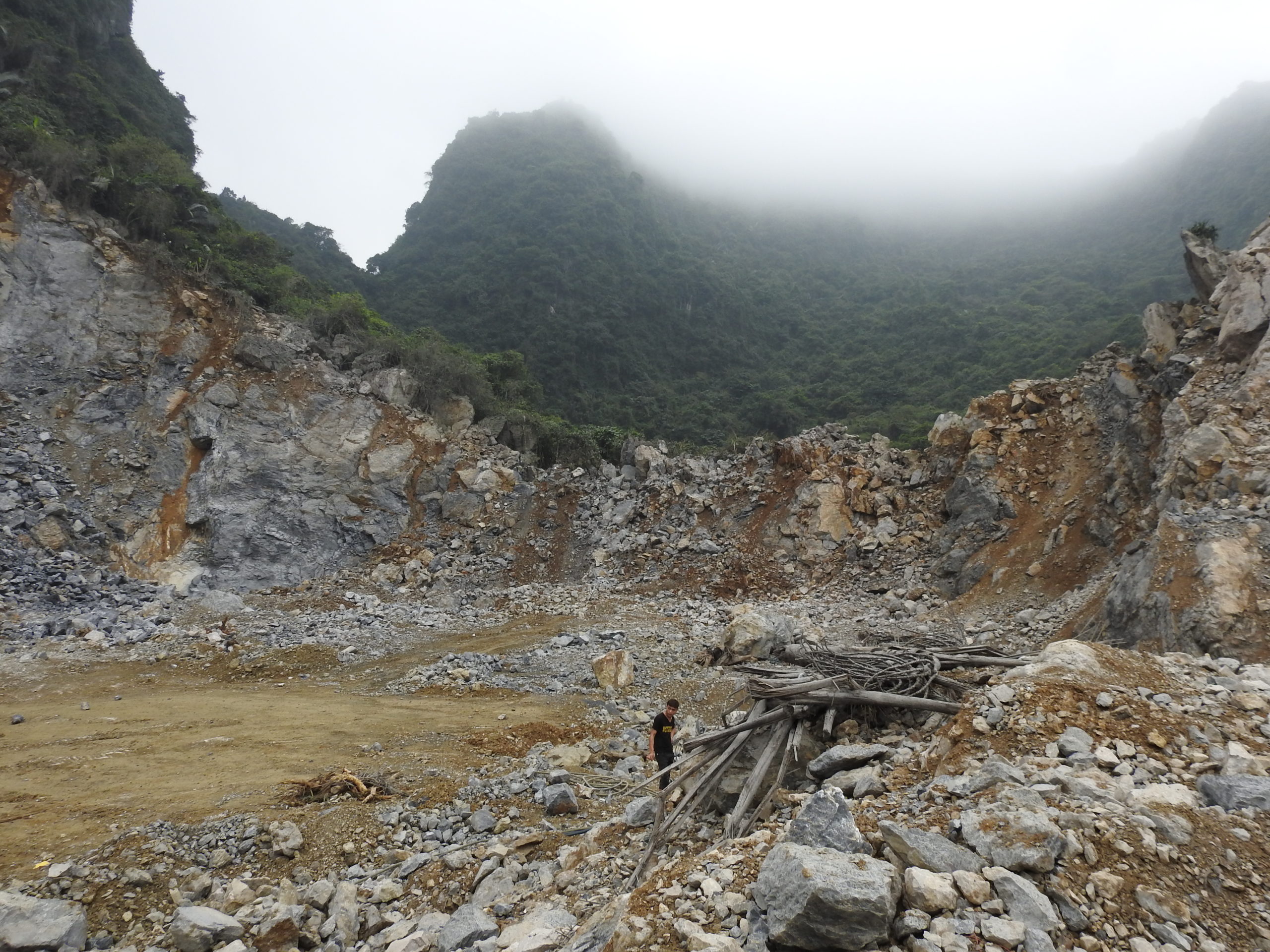
FFI has a project site in Kim Bang and is in partnership with the government’s Forest Protection Department (FPD). A group of six people make up a community patrol team – some of whom are ex-hunters – working with FFI and the FPD to monitor the situation in the forest.
Besides this, FFI is also pushing to turn Kim Bang into a protected forest. This effort comes with complications, as before 2016 there wasn’t awareness that langurs, listed as critically endangered by the IUCN Red List, were living there. This means that in Kim Bang, there are competing interests between mining firms, conservationists, and the government trying to strike a balance between the two.
“No one even knew the langurs were there really. A lot of people in government didn’t know they were there at all. Certainly the mining companies had no idea,” Kempinski said. “From their perspective, it’s just a limestone mountain like any other. But to some degree, I appreciate it, they’re a mining company that’s what they do, they make cement.”
Today, there are reported to be 24 mining companies operating in Kim Bang. According to Ngo Manh Ngoc, deputy director of Ha Nam’s Department of Agriculture and Rural Development, the department submitted a proposal to the government in 2017 to create a conservation area in Kim Bang with a particular focus on the langurs, without success. Last year, Prime Minister Nguyen Xuan Phuc also urged the leadership of Ha Nam Province to take emergency action to protect the voọc mông trắng in Kim Bang, and to investigate the impact the mining is having on the langurs.
The future of Kim Bang is ultimately in the hands of the government, which has to decide, given the information they have been given by conservationists, what is the best use of the land.
“They’re sort of in between, they are having to look at all these different land users and stakeholders, and trying to make the best decision,” Kempinski said. “We’ve had a lot of very honest and very frank discussions with them and they’re trying to find a balance.”
However, when it comes to saving the langurs and the other endangered species in the forest, there isn’t much room for compromise.
“It’s very hard to find a balance with something so sort of black and white,” Kempinski said. “It’s not like there’s much of a trade off we can offer. This is officially one of the world’s 25 most endangered primates, but I would suggest it is probably in the top 10. And, apart from Van Long, this is it.”
Beyond conservation alone, there are other arguments that could be made for the protection or the sustainable development of the area. An easy day-trip from Hanoi, Kempinski believes Kim Bang has “huge potential for tourism” if it were rebranded as a green oasis near the city, where ecotourism and recreation could bring capital to the province without the destructive forces of mining.
But when it comes to the Delacour’s langur, mining is not only a matter of life or death, but of an entire species of the white shorts langurs, only found in Vietnam, ceasing to exist.
“There’s no higher level of conservation importance than this really,” Kempinski said. “If you compare it to any species across the world you would say, this is absolutely the highest possible priority.”

